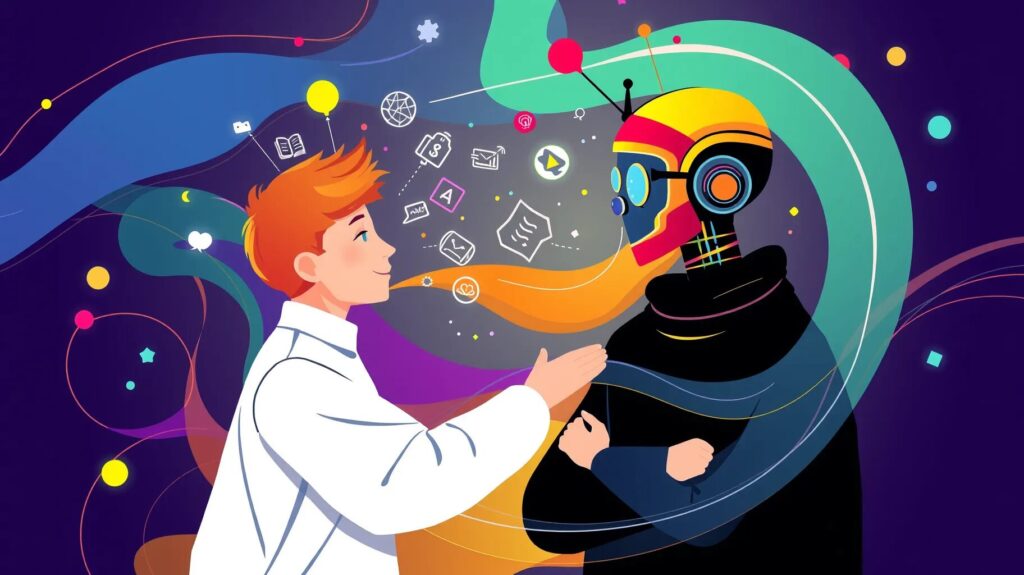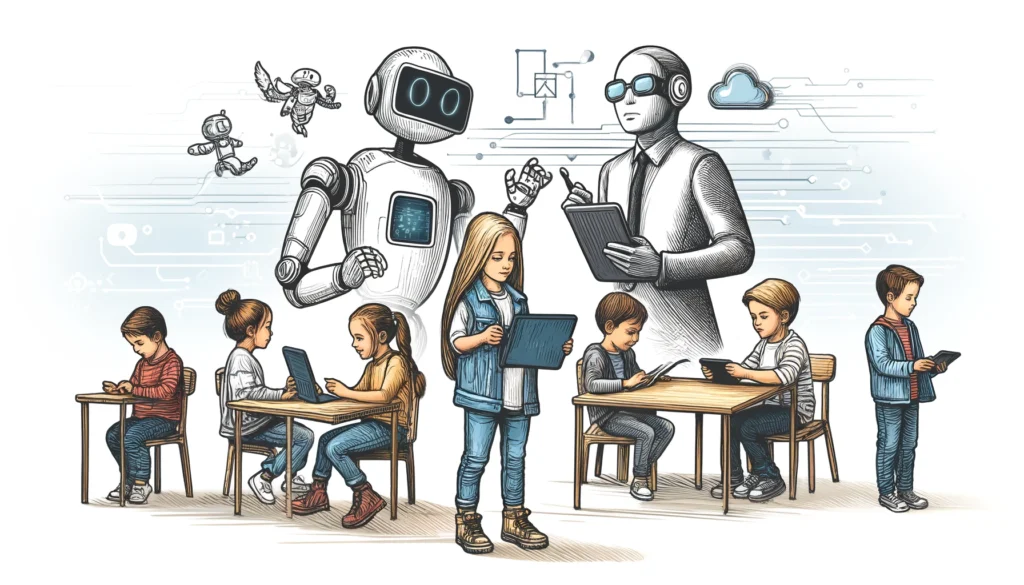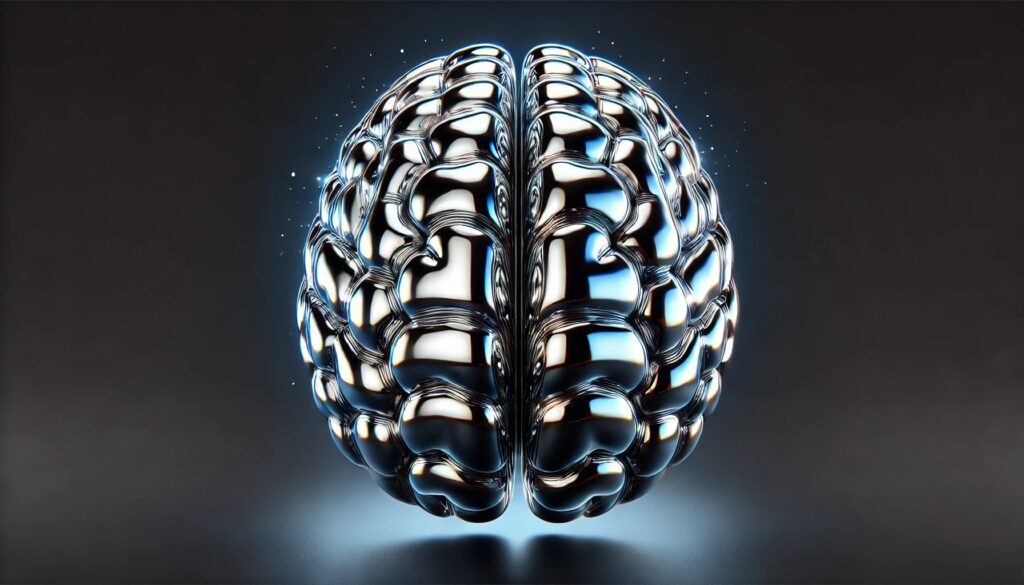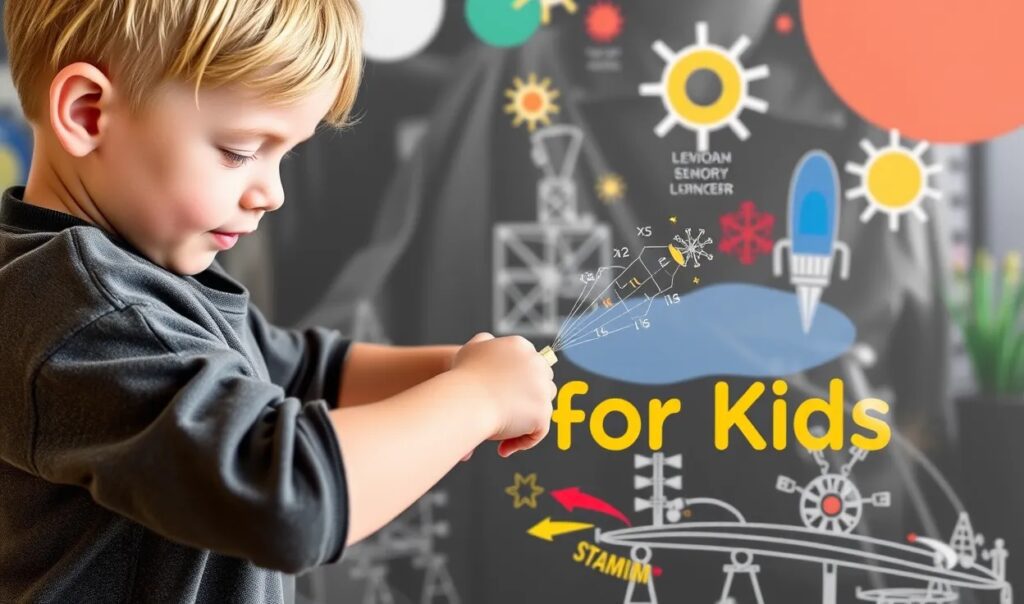
The Shift Towards Personalized Learning: Why It’s Happening Now
Education is evolving rapidly. For years, we relied on rigid, one-size-fits-all methods to learn new skills.
AI-driven personalized learning paths are changing the game. These systems allow learners to move at their own pace, receiving tailored content that fits their unique needs and preferences.
But why now? Simple: advancements in AI technology and big data are making this level of customization possible on a mass scale. We’re at the crossroads of a learning revolution, where individual differences are not just recognized, but celebrated.
How AI Tailors Learning to Fit Your Style
Ever notice how some lessons just click, while others leave you scratching your head? That’s because not everyone learns the same way. Some are visual learners, others prefer hands-on approaches. AI taps into this variability by collecting and analyzing data on how you engage with content.
It uses machine learning algorithms to identify patterns—whether you tend to perform better after watching videos, reading text, or taking quizzes—and then delivers more of what works best for you. This type of personalized instruction could dramatically boost your learning speed.
Understanding the Role of Data in Personalized Education
Personalized learning thrives on data. From your quiz scores to the time it takes you to read a passage, every interaction feeds into a larger picture of your learning habits. AI doesn’t just notice how well you’re doing; it tracks how long you stay engaged, what materials cause you to slow down, and where you thrive.
This information then helps shape a customized learning path that adjusts in real-time. What’s incredible is that AI systems can process data points far beyond what a human teacher could ever track. By leveraging this depth of insight, students can bypass content they already know and focus on mastering new concepts.
AI vs Traditional Learning: What’s the Real Difference?
In traditional learning, everyone gets the same content, at the same pace, regardless of their strengths or weaknesses. This creates a rigid environment that can either bore advanced learners or overwhelm those who struggle. In contrast, AI-driven learning systems act as dynamic teachers, constantly shifting based on your progress.
They highlight areas where you need improvement and dial down the focus on concepts you’ve already mastered. This flexibility fosters a sense of achievement, and with every small win, you’re motivated to keep going. By keeping learning fresh and targeted, AI helps you master skills faster than you would in a traditional setting.
Why Personalized Learning Accelerates Skill Development
Here’s the secret: AI-powered personalized learning keeps you in the “sweet spot” of difficulty. Too easy, and you’ll lose interest; too hard, and you’ll get discouraged. AI analyzes your learning curve and finds that perfect balance, pushing you just enough to stay engaged but not frustrated.
Plus, the continuous feedback you receive is like having a personal coach by your side, helping you make adjustments on the fly. Over time, this precise targeting of your learning level results in faster skill acquisition, as you’re constantly building on what you know without wasting time on irrelevant content.
Adapting to Your Learning Pace: No More One-Size-Fits-All

In a traditional classroom, everyone moves at the same speed, whether they grasp the material or not. But here’s the thing: we don’t all learn at the same pace. Some breeze through new concepts, while others need more time. With AI-driven learning paths, your unique pace becomes the priority.
The system adapts, slowing down when you’re struggling and speeding up when you’ve mastered a topic. This personalized pacing ensures you’re neither left behind nor stuck waiting. It’s a liberating shift, where every learner gets to move at the speed that works for them—no guilt, no pressure.
Predictive Algorithms: How AI Knows What You Need Next
It might seem like AI has a sixth sense when it comes to predicting what you need to learn next, but really, it’s all about predictive algorithms. These algorithms analyze the data collected from your interactions, identifying patterns that suggest what you’re likely to struggle with or excel at.
With that insight, the AI can anticipate your needs, offering targeted lessons that help you bridge gaps in your understanding before they become bigger issues. This forward-thinking approach makes the learning process smoother, guiding you toward mastery step-by-step, even before you realize you need help in a specific area.
Building Confidence Through AI-Powered Feedback Loops
Feedback can make or break your learning experience. In traditional learning environments, feedback is often delayed or inconsistent, leaving students uncertain about their progress. With AI-driven systems, feedback is immediate and constant. Whether it’s through quizzes, interactive exercises, or real-time assessments, you always know how you’re doing.
These feedback loops are designed to boost your confidence by showing incremental progress. The system adjusts its difficulty based on your performance, offering challenges that are neither too easy nor too hard. Over time, this consistent feedback helps build a stronger sense of accomplishment, keeping your motivation high as you learn new skills.
How AI Enhances Motivation and Engagement in Learning
Staying motivated is often the hardest part of learning a new skill, especially when the process feels long and tedious. AI changes that by making learning more engaging. Through gamification techniques, personalized lessons, and interactive content, AI-powered platforms create an environment where learning feels fun and rewarding.
Imagine earning badges, unlocking new levels, or getting instant rewards for completing tasks—this taps into our natural desire for achievement. Plus, the AI constantly tweaks the material based on your interests, keeping you engaged with content that resonates with you. When learning feels this immersive, staying motivated becomes a lot easier.
Real-Life Applications of AI-Driven Learning Platforms
We’re not talking about science fiction; AI-driven personalized learning paths are already here and being used across industries. From language learning apps like Duolingo, which adapts lessons to fit your skill level, to platforms like Coursera that offer tailored courses based on your career goals, the technology is revolutionizing how we learn.
Corporate training programs are also leveraging AI to create customized learning tracks for employees, ensuring they develop the right skills for their roles at a faster pace. Even in healthcare, AI is being used to train doctors by simulating complex medical cases that adjust to the learner’s performance. The possibilities are endless, and we’re just scratching the surface of what’s possible.
Can AI Replace Human Tutors? A Balanced Perspective
AI-powered learning is incredibly efficient, but can it truly replace the human touch of a tutor? While AI excels at customizing content, providing instant feedback, and adjusting learning paths, it lacks the emotional intelligence and adaptability of a human tutor. A human can offer empathy, understanding, and motivation that an algorithm can’t replicate. However, AI and human tutors can complement each other.
For example, AI can handle repetitive tasks like grading and data analysis, while human tutors focus on nuanced discussions, emotional support, and real-world applications. In essence, AI enhances the tutor’s role rather than replacing it, creating a more holistic learning experience.
Overcoming Common Learning Obstacles with AI

We’ve all faced stumbling blocks when learning something new—whether it’s losing motivation, feeling overwhelmed, or simply not understanding a concept. AI-driven platforms are designed to tackle these hurdles head-on. For starters, AI’s adaptive learning ensures that content is delivered at the right difficulty level, preventing frustration or boredom.
When you hit a roadblock, the system offers just-in-time support, like hints, explanations, or alternative learning methods. Additionally, AI can detect when you’re disengaged or falling behind and suggest adjustments, such as extra practice sessions or different types of content. In short, AI helps remove many of the common barriers that slow down learning.
The Future of AI in Education: What’s Next?
We’ve already seen how AI is transforming education, but what’s next? The future promises even more integration of AI into learning environments, with virtual reality (VR) and augmented reality (AR) playing bigger roles. Imagine practicing medical surgeries in a VR environment that adjusts based on your performance, or learning history through immersive AR experiences that bring historical events to life.
Moreover, as AI becomes more sophisticated, it will better understand human emotions, adapting lessons based on your mood or energy level. As these technologies evolve, we can expect learning to become even more personalized, interactive, and engaging, potentially reshaping how we think about education altogether.
Ethics in AI-Personalized Learning: Privacy Concerns and Transparency
As exciting as AI-driven learning is, it’s important to address the ethical implications. With so much personal data being collected—everything from your learning preferences to the time you spend on each lesson—privacy becomes a major concern. How secure is this data? Who has access to it? And how is it being used?
Transparency is key. Educators and developers must ensure that AI systems are designed with robust privacy protections and clear guidelines on how data is collected and utilized. In addition, ethical AI should be free from bias, ensuring that learning algorithms provide fair opportunities to all students, regardless of background.
How to Get Started with AI-Driven Learning Today
Ready to dive into AI-powered personalized learning? Getting started is easier than you think. Begin by exploring online platforms that already incorporate AI, such as Khan Academy, Udemy, or Skillshare. These platforms offer a range of courses tailored to different skill levels and learning preferences, and many of them adjust dynamically based on your progress.
You can also look into AI-driven language learning apps like Babbel or Memrise, which use AI to enhance vocabulary retention and fluency. Start small, pick a course that interests you, and let AI guide you through the learning process. You’ll quickly see how effective—and enjoyable—personalized learning can be.
Balancing AI Tools with Human Intuition for Optimal Results
While AI-driven learning paths are undeniably powerful, it’s essential to strike a balance between AI tools and human intuition. AI can process vast amounts of data and tailor learning experiences in real-time, but it’s not infallible. Sometimes, human judgment is needed to interpret subtle nuances that AI may overlook.
For example, while an AI might suggest more practice on a topic based on your quiz performance, a human teacher can assess whether a lack of engagement or external factors are impacting your learning. Combining AI’s efficiency with human intuition ensures a well-rounded approach, leading to deeper understanding and faster skill mastery.
Leveraging AI for Continuous Learning Beyond the Classroom
Learning doesn’t stop when you finish a course or degree. In fact, continuous learning is becoming essential in our fast-paced world. AI can be your long-term learning partner, constantly evolving with you as you gain new skills. With platforms that adapt to your career growth and changing interests, AI ensures that you’re never stuck in outdated knowledge.
Whether it’s keeping up with industry trends, acquiring new certifications, or exploring hobbies, AI-driven systems help you stay relevant and curious. By constantly adjusting and offering new challenges, AI encourages lifelong learning in a way that traditional education systems can’t match.
How AI-Personalized Learning Boosts Career Growth

In today’s competitive job market, upskilling and reskilling are more important than ever. AI-driven learning paths help professionals develop targeted skills faster, making them more adaptable and valuable to employers. AI tools analyze job trends and suggest the most relevant courses, giving learners an edge in their fields.
Additionally, AI-powered platforms offer customized learning schedules that fit into your busy lifestyle, allowing you to learn without sacrificing work or personal time. This adaptability not only accelerates career growth but also builds a mindset of continuous improvement, positioning you as a forward-thinking professional ready to tackle new challenges.
The Role of AI in Collaborative Learning Environments
While AI excels at individualizing learning, it’s also transforming collaborative learning environments. AI can facilitate group projects by pairing students with complementary skills, ensuring that teams are diverse and effective. In these settings, AI acts as a mediator, tracking group dynamics and offering real-time feedback to improve collaboration.
It can also identify when certain group members might need more assistance and suggest resources or strategies to help them catch up. By fostering better teamwork and communication, AI-enhanced collaborative learning prepares students for real-world scenarios where working with others is critical to success.
Challenges and Limitations of AI-Personalized Learning
Despite the many benefits, AI-powered learning isn’t without its challenges. One significant limitation is the reliance on data, which can sometimes result in learning paths that are too rigid or focused on the wrong areas. AI is only as good as the data it’s fed, and if that data is incomplete or biased, the system might make inaccurate recommendations.
Furthermore, not all students have equal access to the technology required for AI-driven learning, creating potential disparities in educational opportunities. It’s essential to recognize these limitations and continue developing AI systems that are more inclusive, flexible, and accurate in their personalization.
How AI Can Improve Learning Accessibility for All
One of the most promising aspects of AI in education is its potential to make learning more accessible. Traditional classrooms can sometimes exclude students with specific needs, whether due to disabilities, language barriers, or varying levels of access to resources. AI can help bridge these gaps.
AI-powered platforms offer features like text-to-speech, personalized reading levels, and real-time translations, making education more inclusive for learners with diverse needs. Additionally, AI systems can create tailored curriculums for students with learning disabilities, adapting the pace and delivery method to meet their specific requirements. This kind of personalized accessibility can revolutionize how we think about inclusive education.
Personalizing Feedback for Diverse Learning Styles
We all process information differently—some of us thrive on visual aids, while others learn best through hands-on activities. AI systems are built to recognize and accommodate these differences by delivering personalized feedback based on your learning style. Whether you’re a visual learner who benefits from infographics or someone who prefers detailed text explanations, AI can adapt the feedback to suit your style.
By tailoring this feedback, AI helps you understand where you’re excelling and where you need more focus, making the learning process smoother and more enjoyable. This customization ensures that no learner feels left behind, regardless of how they prefer to learn.
AI-Powered Learning Communities: Connecting Learners Globally
Another exciting development in AI-driven education is the creation of global learning communities. AI can connect learners from around the world who share similar interests, goals, or learning paths, fostering collaboration and peer support. These AI-powered communities offer forums for discussion, group projects, and peer-to-peer learning, all while ensuring that the right people are paired based on their skills and needs.
This global network of learners helps students gain diverse perspectives and engage in meaningful discussions, enhancing the learning experience beyond just the content. It’s a way to connect, share ideas, and grow together, regardless of geographical boundaries.
Gamification and AI: Making Learning Fun Again
Let’s face it: learning can sometimes feel like a chore. But what if education felt more like a game? That’s where gamification comes in, and AI plays a crucial role in bringing this concept to life. AI-powered platforms use gamification techniques—like leveling up, earning badges, and competing on leaderboards—to make learning more engaging and fun.
This not only keeps learners motivated but also encourages them to push themselves further. By turning educational content into a series of challenges and rewards, AI-driven gamification helps learners stay focused and enjoy the process of mastering new skills.
The Human Element in AI-Driven Learning
While AI-driven learning paths offer immense benefits, the human element remains irreplaceable. Educators, mentors, and peers bring something to the table that AI simply can’t: emotional connection, empathy, and real-life experience. It’s important to remember that AI is a tool—an incredibly powerful one—but it works best when combined with human guidance.
A mentor can provide encouragement when things get tough, share personal insights that a machine can’t, and help you see the bigger picture in ways an algorithm won’t. By blending the precision of AI with the empathy of human educators, learners get the best of both worlds.
Key Takeaways:
- Personalized Learning Paths: AI tailors learning experiences to fit individual learning styles, adapting content and pacing for more efficient skill development.
- Data-Driven Insights: AI uses data to track your progress, engagement, and preferences, creating customized learning paths that evolve in real-time based on your needs.
- Faster Skill Mastery: By keeping you in the “sweet spot” of difficulty and providing constant feedback, AI helps you learn new skills faster than traditional methods.
- Gamification and Engagement: AI-powered platforms use gamification to make learning fun and engaging, boosting motivation and retention.
- Accessibility: AI improves learning accessibility, offering features like text-to-speech, real-time translations, and adaptive curriculums for students with special needs.
- Human-AI Collaboration: While AI excels in customization and efficiency, the human element remains vital for emotional support, nuanced understanding, and mentorship.
- Global Learning Communities: AI connects learners globally, fostering peer collaboration and diverse perspectives to enrich the learning experience.
- Future Innovations: The future of AI in education will likely include more immersive technologies like VR and AR, further enhancing personalized learning experiences.
Resources for Exploring AI-Driven Personalized Learning:
- Khan Academy
- Offers free, AI-powered personalized learning paths in subjects like math, science, and humanities.
Website: Khan Academy
- Offers free, AI-powered personalized learning paths in subjects like math, science, and humanities.
- Coursera
- Features AI-driven recommendations for online courses, tailored to your career goals and skill levels.
Website: Coursera
- Features AI-driven recommendations for online courses, tailored to your career goals and skill levels.
- Duolingo
- A popular language-learning app that uses AI to adapt lessons based on your performance and progress.
Website: Duolingo
- A popular language-learning app that uses AI to adapt lessons based on your performance and progress.
- EdX
- Offers AI-enhanced learning platforms with courses from top universities, customized to your progress.
Website: EdX
- Offers AI-enhanced learning platforms with courses from top universities, customized to your progress.
- Udemy
- Provides a wide range of AI-powered personalized learning courses, from coding to creative skills.
Website: Udemy
- Provides a wide range of AI-powered personalized learning courses, from coding to creative skills.
- Skillshare
- An online learning community where AI helps curate courses in design, business, and technology.
Website: Skillshare
- An online learning community where AI helps curate courses in design, business, and technology.
- Babbel
- A language-learning app using AI to customize lessons, improving retention and fluency over time.
Website: Babbel
- A language-learning app using AI to customize lessons, improving retention and fluency over time.
- Memrise
- Uses AI and gamification to enhance vocabulary retention and language learning.
Website: Memrise
- Uses AI and gamification to enhance vocabulary retention and language learning.
- FutureLearn
- AI-powered learning platform offering short courses from leading universities and cultural institutions.
Website: FutureLearn
- AI-powered learning platform offering short courses from leading universities and cultural institutions.
- Google AI Education
- Provides resources and courses on how AI is shaping education and other fields.
Website: Google AI
- Provides resources and courses on how AI is shaping education and other fields.





